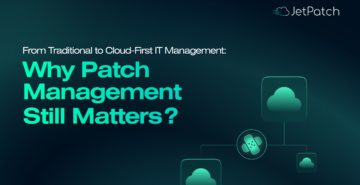When dealing with compliance, it’s easier and cheaper to comply than having to live with the repercussion of non-compliance. Data has become one of the most valuable resources in the world, and cybercriminals will do anything to get it. Any vulnerability in your security systems becomes fair game for cybercriminals. This is why PCI compliance is important as it helps you evaluate and improve your security measures.
Importance of PCI Compliance
The threat of cybercriminals has become an everyday concern for businesses, institutions, and organizations. The advancement of technology has helped but also opened up vulnerabilities that cybercriminals can exploit. However, by maintaining PCI compliance, businesses are enjoying security benefits such as:
- Boosts customer confidence
Every day there is always a new story about a company, business, or organization that was hacked. Customers tend to avoid such businesses and prefer those that prioritize security. A common feature that customers look for is PCI compliance, as it shows that you value their security.
Every data breach that your business experiences comes at a cost. Your reputation is damaged, lawsuits, and reduced revenue due to the exodus of customers.
- Provides a checklist for security assessment
Unless you’re conversant with cybersecurity, you’ll have trouble understanding where to begin and which areas of cybersecurity are important. Fortunately, PCI DSS requirements are quite detailed and will help you evaluate your security measures.
Which items should you look for when implementing PCI Compliance?
Most organizations struggle to recover from a data breach as they lose more than just data. Your business can avoid this by implementing PCI compliance. To do so, you need to focus on these areas:
- Cardholder data
The main aim of PCI compliance is to protect cardholder data. According to the PCI Security Standards Council, cardholder data is the primary account number that identifies the cardholder account as well as the issuer. It also includes the cardholder name, sensitive authentication data, service code, PIN, Card Verification Code, and expiration date.
Put in place measures to protect cardholder data and ensure that you educate your employees on how to handle this data. Implement additional measures that reduce your risk, such as encrypting cardholder data while in transit and at rest. Also, ensure that you don’t store cardholder data unless it becomes a necessity. If you decide to store the data, be sure to delete the data once you’re done.
Since the goal is to protect cardholder data, be sure to restrict access to the data. Only authorized employees should have access to this data. Attacks can come from anywhere, even from your employees. Therefore, restrict access to the data, the servers, hardware, and paper records containing the data.
- Security
Secure your data by installing a firewall to secure your network. However, to protect your network, you need to evaluate how your servers function and who can access them both internally and externally. Document everything and use your findings to create a firewall that blocks everything except what you deem necessary.
- Vulnerability
Cybercriminals evolve and adapt to every new measure and security systems that are developed. They are always scanning for vulnerabilities to exploit, which is why your business should prioritize vulnerability management. Cybercriminals will tap into your wired or wireless network and gain access to data. They can also use phishing techniques to gain access to your systems and, ultimately, the cardholder data.
Attacks are often automated and always on the lookout for vulnerabilities; it’s your duty to find the vulnerabilities and patch them before the attack bots do. Test your security systems regularly for vulnerabilities, breaches, etc.
- Evaluate Third-Party Connections
Since most companies prefer to outsource certain systems, applications, and software, it’s advisable that you evaluate everything that you’ve outsourced. If the software requires an update, be sure to update it. If a system requires security patches, be sure to install the patches.
Be cautious when dealing with third-party apps as they can be the source of the vulnerabilities in your network. A vulnerability in the software creates security holes that could be used as a gateway into your network. Cyber attackers typically use zero-day exploits to target these security weaknesses.
Wrapping up
Adhering to PCI DSS requirements is good business for you, your customers, and the payment card brands. It’s a win-win situation for everyone. If you’re not hacked, you maintain your reputation and business. You will not lose customers to other merchants, and you will have no issues with your payment card companies. Therefore, invest in PCI compliance, security measures as well as training and educating your employees.



